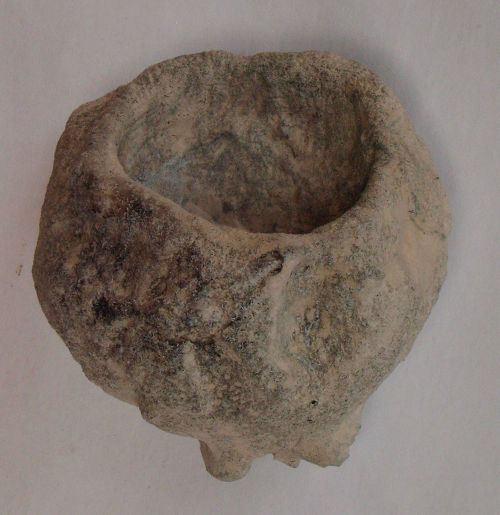
Ophiraphidites infundibuliformis
Schrammen 1899
Ophiraphidites species are quite rare at Höver and Misburg, and in the field they are easily overlooked due to their inconspicuous, lumpy shapes.
Ophiraphidites infundibuliformis forms funnel-, cup- or bowl-shaped bodies, with fairly thick walls. Ophiraphidites apparently has no special canals or postica. The specimen shown here has several short roots.
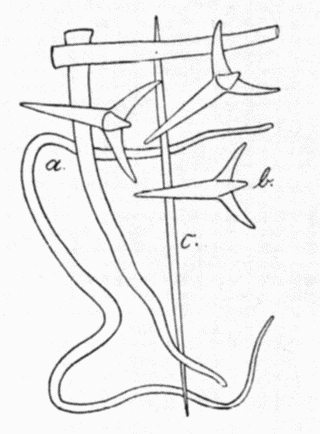
Spicules of Ophiraphidites infundibuliformis
(After Schrammen 1899)
- (a) Ohirhabds
- (b) Triaenes
- (c) Amphioxes
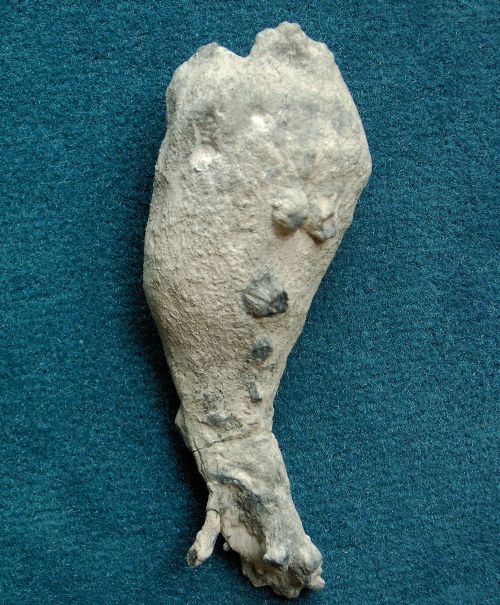
Ophiraphidites tuberosus
Schrammen 1899
Ophiraphidites tuberosus forms irregular bodies, sometimes with roots as in the example shown here, sometimes directly attached to other sponges.
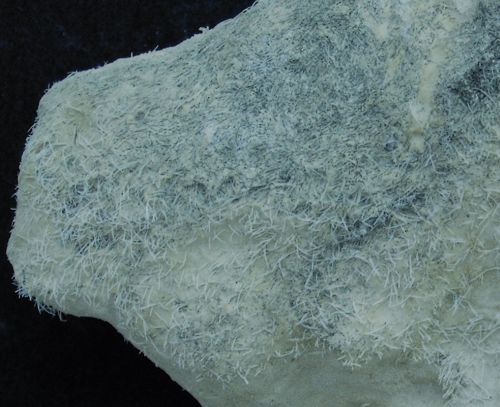
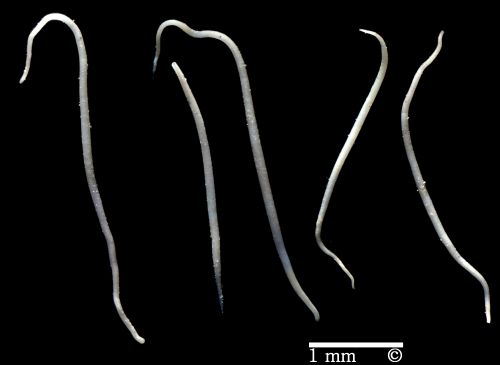
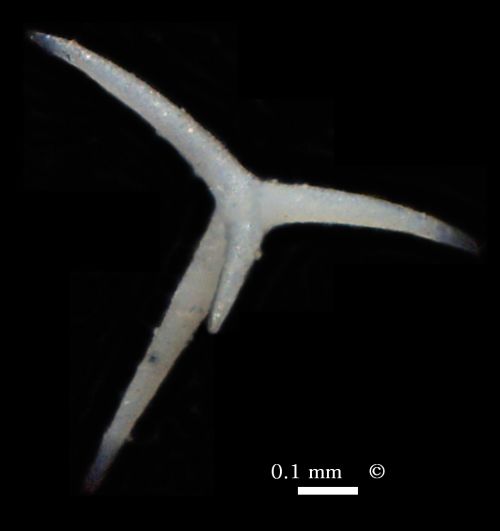
The genus Ophiraphidites is characterized by peculiar spicules termed ophirhabds. The ophirhabds and oxeas (amphioxes) reach considerable size (5 mm), making them visible to the naked eye, even in unetched specimens, as long as there is sufficient contrast in colouring.
The image to the left shows a section of an etched fragment of Ophiraphidites ?tuberosus.
The next figure shows a selection of typical ophirhabs (same specimen as above), and the third figure shows a typical triaene with unbranched, curved cladomes.
Ophiraphidites may be confused with Pachycothon, whose skeletal elements are termed heloclones. Heloclones resemble zygosed Ophirhabs, i.e. they are rigidly connected to neighboring skeletal elements. As a consequence, heloclones are equipped with hooks, knobs, and molds from adjacent heloclones, whereas ophirhabds are smooth.
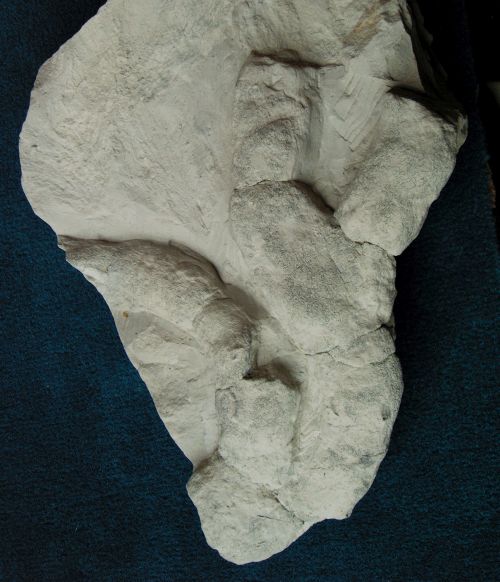
Ophiraphidites ramosus
Schrammen 1910
Ophiraphidites ramosus forms branching structures composed of curved cylindrical sections, 20 to 40 mm thick.